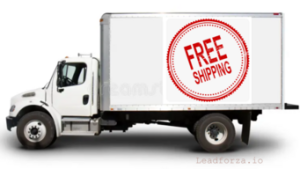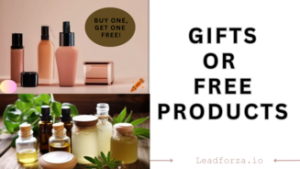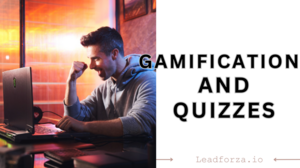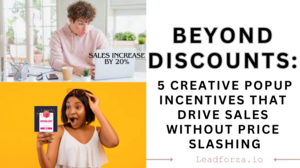While some may find them intrusive, well-designed popups enhance user experience by delivering relevant content.
These attention-grabbing windows offer timely offers and personalized incentives such as discounts, promotions, newsletter sign-ups, early access to sales or free gifts, enticing users to stay on the site.
Timely popups, like exit-intent popups, capture potential customers before they leave, reducing bounce rates. Moreover, they facilitate data collection for personalized marketing strategies, tailoring offers based on user behavior.
They also bring more sales and happy customers to the online store.
READ ALSO
- The Secret Tool to Sell More Custom T-shirts on Your Ecommerce Websites
- Personalization Paradox: Striking the Balance Between Relevancy and Creepiness in Popups
- Gamification Power: How Interactive Popups Can Boost Engagement and Sales
- Pop-Up Psychology: 7 Underrated Strategies to Skyrocket Conversions in 2024
- Beyond Exit Intent: 5 Advanced Popup Triggers Ecommerce Stores are Missing out on
- Popups for Customer Education and Support: Providing Valuable Resources
Nevertheless, there are certain limitations of relying solely on discounts as popup incentives. Firstly, continuous discount offers may devalue products, impacting brand perception and eroding profit margins.
Continuously, customers may develop a habit of waiting for discounts, delaying purchases. The constant use of discounts could also attract price-sensitive shoppers rather than fostering loyalty.
Relying solely on one strategy also limits the diversity of incentives. For instance, when an e-commerce owner relies solely on discounts, he/she can miss opportunities for engaging alternatives like exclusive content or early access.
In this article, we will be discussing five (5) creative popup incentives that can drive sales without price slashing.
5 creative popup incentives that can drive sales without price slashing
- Free Shipping
- Early Access or Exclusivity
- Gifts or Free Products
- Gamification and Quizzes
- Personalized Recommendations
Free Shipping

Most customers give up on purchasing when they see the shipping fee. Offering free shipping via a popup captures attention and motivates immediate action, reducing cart abandonment rates.
Free shipping prompts a sense of savings and simplifies the decision making process, hence encouraging customers to complete transactions.
The examples below showcase how an ecommerce owner can perfectly utilize free shipping popups effectively.
The first effective method is called the ‘Threshold Offer,’ where free shipping is granted upon reaching a specific purchase amount. For instance, a popup may announce, ‘Free Shipping on Orders Over $100,’ encouraging customers to add more items to their carts.
The second method is called the ‘Limited-Time Offer’ or the ‘Countdown Clock’ popup, creating a sense of urgency by declaring, ‘Free Shipping for the Next 24 Hours.’ This compels immediate action, reducing hesitation.
We also have the ‘First-Time Purchase’ popups, offering free shipping for new customers, attracting and incentivizing first-time buyers.
Then there is the ‘Newsletter Subscription’ popups which promises free shipping in exchange for subscribing, growing the email list while boosting conversions.
Additionally, there is the ‘Exit Intent’ Popup which catches hesitant shoppers before they abandon their carts and reminds them of the easy way to snag free shipping.
Lastly, there is the ‘Mystery Box’ popup which adds an element of surprise and excitement, making free shipping feel like a fun bonus gift.
Early Access or Exclusivity

When e-commerce owners offer a sneak peek or the privilege to buy before the public launch, it creates a sense of exclusivity and appeals to customers’ desire for uniqueness.
Exclusive discounts for subscribers or early adopters make users feel valued which further fosters a connection with the brand.
This strategy capitalizes on the fear of missing out (FOMO), motivating customers to sign up or make a purchase promptly to access these special privileges.
It cultivates loyalty by rewarding those who choose to engage with the brand regularly. It also boosts sign-ups and conversions.
Below are examples that illustrate how an ecommerce owner can effectively utilize early access or exclusivity popups.
Firstly, the ‘VIP Club’ popup creates a sense of belonging, offering exclusive previews, discounts, or events to members who sign up.
Secondly, ‘Flash Sales’ popups showcase time-sensitive exclusive deals, creating urgency and exclusivity.
Thirdly, limited-time promotions like ‘Be the First to Shop’ alert subscribers to new product launches, encouraging swift action.
Continuously, brands can utilize “Members-Only Discounts” popups, unlocking special pricing for subscribers.
Additionally, gamification elements, such as “Unlock Exclusive Rewards,” make the sign-up process interactive, enhancing engagement.
There is also the ‘Secret Code’ popup which offers a sense of mystery with a popup that makes customers feel like detectives hunting for buried treasure. For instance, the popup can say, “Unlock the vault! Enter code [secret code] at checkout for exclusive discounts on [category]!”
There is also the ‘Social Share’ popup which compels users to spread the word, thereby incentivizing sign-ups, and encouraging social engagement.
The ‘Limited Edition’ popup highlights scarcity and creates a sense of urgency which makes the product even more desirable.
Lastly, employing personalized popups based on customer behavior, like “Exclusive Offer for Your Favorites,” tailors incentives to individual preferences.
WOULDN’T YOU LIKE TO KNOW? – 5 Advanced Popup Triggers Ecommerce Stores are Missing out on
Gifts or Free Products

This tactic taps into the psychological principle of reciprocity, where individuals feel compelled to respond positively to a gift.
The added item enhances the overall value proposition, making the purchase more appealing and justifying the expense. Even if the gift is small, it feels like a win they wouldn’t get elsewhere.
Free gifts create a sense of surprise and delight, enhancing customer satisfaction and potentially encouraging repeat business.
Customers perceive they are getting more for their money, fostering a positive buying experience. It removes hesitation and pushes them over the edge.
It also leverages the user’s desire for tangible benefits, providing an immediate reward for his/her decision to make a purchase.
The examples below will help you understand better how to effectively utilize gift or free products popups:
- The ‘Free Sample’ popup offers a small, complimentary product, allowing customers to experience the brand’s offerings.
- ‘Bundle Deals’ popups entice with added value, such as ‘Buy One, Get One Free,’ encouraging larger purchases.
- The ‘Mystery Upgrade’ popup sparks intrigue and adds an element of surprise and potential bonus value which boosts excitement.
- Brands can implement ‘Tiered Gifts’ popups, where spending thresholds unlock different free items, motivating customers to reach higher purchase amounts.
- The ‘Limited Edition’ popup, offering an exclusive item for a limited time, creates a sense of urgency, scarcity, and fear of missing out.
- ‘Birthday Gifts’ popups, providing special offers during a customer’s birthday month, personalize the experience.
- The ‘Seasonal Surprise’ popup ties into the season and offers a relevant, valuable gift.
- Interactive popups, like “Spin to Win a Free Gift,” engage users while offering a chance to receive a complimentary item.
- The ‘Personalized Treat’ popup personalizes the gift and makes them feel seen and valued.
- The ‘Complementary Duo’ popup makes the purchase feel like a complete set, adding perceived value.
Gamification and Quizzes
Quizzes, where customers answer questions related to preferences or products, create a personalized touch, guiding users to tailored recommendations and increasing engagement.
It also sparks curiosity as most users cannot resist a fun challenge. It also helps the e-commerce owner to collect valuable data.
Contests with prizes or discounts encourage participation, tapping into the thrill of competition and the desire for rewards.
Gamification adds an element of fun and surprise to the shopping journey, making it memorable and shareable.
This increased engagement extends the time users spend on the site, fostering a deeper connection with the brand and increasing the likelihood of conversions.
Here are some examples below will help you better understand the concept of gamification or quiz popups:
- The ‘Product Match Quiz’ helps customers discover ideal products by asking questions about preferences and needs, leading to personalized recommendations.
- ‘Spin to Win’ popups provide an interactive and chance-based experience, where users spin a wheel to receive discounts or prizes. It adds an element of surprise and excitement, incentivizing participation.
- ‘Daily Trivia Contests’ quiz users on product knowledge, fostering engagement and education. It further draws in returning visitors, builds brand loyalty, and offers a valuable prize for engagement.
- The ‘Product Detective’ challenge sparks curiosity and promotes brand awareness while collecting valuable data.
- ‘Personality Quizzes’ create a fun, personalized experience, linking results to product recommendations based on individual styles or preferences.
- ‘Unlock the Mystery Prize’ popups generate curiosity, enticing users to complete an action for a surprise reward.
- The ‘Level Up Progress Bar Challenge’ gamifies the shopping process, rewarding users as they move through stages like adding items to the cart. It also motivates completing purchases and creates a sense of achievement.
Personalized Recommendations
By analyzing user behavior, preferences, and past purchases, popups can suggest products tailored to individual needs.
Personalized recommendations also simplify the decision-making process, as users are presented with options that match their preferences.
This level of customization enhances the overall shopping experience, fostering a positive perception of the brand. It also creates a sense of understanding and appreciation, capturing the user’s attention and increasing the likelihood of engagement.
The relevance of the offer is heightened as customers feel the presented items align with their interests, solving their specific needs.
It kills the decision fatigue of the user making the decision to buy easier and faster.
Below are some examples of personalized recommendation popups:
- ‘Recently Viewed Items’ popups remind users of products they’ve previously shown interest in, encouraging them to reconsider a purchase.
- The ‘Based on Your Cart’ popup instantly connects users to their current purchase and suggests relevant, complementary items.
- ‘Best Sellers for You’ popups leverage data on popular items among similar customers, tailoring recommendations based on trends.
- The ‘Trending for You’ popup personalizes by category and taps into social proof, making them feel part of a trendsetting group.
- ‘Complete the Look’ suggestions offer complementary products to items in a user’s cart, enhancing the shopping experience.
- The ‘Past Picks & New Arrivals’ popup taps into past preferences while introducing exciting new options.
- ‘Personalized Collections’ popups curate specific product assortments based on user preferences, creating a custom shopping journey.
- The ‘Surprise Upgrade’ popup offers a personalized upgrade, catering to their taste and desire for something special.
- Utilizing ‘User Favorites’ popups highlights items that align with a customer’s past likes or saved items, showcasing products with a higher likelihood of interest.
- The ‘Wishlist Whisperer’ popup speaks directly to their desires and creates a sense of exclusivity, pushing them closer to adding it to their cart.
Tips for Implementing These 5 Creative Popup Incentives effectively
Below are practical ways that you can implement the above-mentioned creative popup incentives effectively:
- Proper Communication: E-commerce owners should clearly communicate the exclusive benefits in the popup using concise and compelling language.
- Timing: Timing is of utmost importance. Don’t bombard visitors right away. Hence, employ popups strategically, such as on entry, after a user has spent some time on the site, or when the user is about to leave to maximize visibility and impact.
- Easy Signup Process: Ensure to offer a seamless sign-up process, ensuring customers easily provide necessary information.
- Engaging Visuals: Use engaging visuals such as dollar signs or shopping carts to highlight the benefit and exclusivity of the offer.
- A/B Testing: A/B testing can refine the effectiveness of popups by experimenting with different visuals, colors, text, placement, and triggers. It also tracks performance and experiments with different designs, messages, and triggers to find what resonates best with your audience.
- Categorize Your Audience: Consider segmenting your audience to provide tailored exclusivity based on customer behavior, demographics or preferences.
- Valuable Exclusivity: Make the exclusivity valuable, whether through unique products, discounts, or content.
- Transparency and Trust: Maintain transparency and trust by delivering on promised exclusivity, fostering a positive relationship with customers who have engaged with the brand.
- Gather Reviews: Track how your popups perform and ask customers for feedback. This helps you refine your approach and keep them excited for future exclusives.
- Reward Loyalty: Consider giving priority access to existing customers or VIP members to show appreciation and build brand loyalty.
- Clarity: E-commerce owners should ensure clarity in messaging by prominently displaying the free shipping offer. They should state the minimum spend for free shipping and avoid confusing jargon.
- Customization: Customize popups based on customer behavior, showing them to potential abandoners or first-time visitors.
- Urgency: Create a sense of urgency with limited-time offers like ‘Free Shipping for the Next 24 Hours.’ Use countdown timers or limited-time offers to create a sense of FOMO and encourage immediate action.
- Mobile-friendliness: Prioritize mobile responsiveness. Make sure that your popup works seamlessly on all devices, especially smartphones, as many users shop on smartphones.
Finalizing,
If you have read to this point, that means you already have knowledge of the 5 creative popup incentives that were discussed.
To refresh your mind, I will recap. They are: Free shipping, Early access or exclusivity, Gifts or free products, Gamification and Quizzes, and Personalized Recommendations.
It is not enough to just read to know, ensure you try out the different popup incentives and discover the one that works best for your business.
Don’t hesitate to share your experience with using any of the creative popup incentives.
MUST READ!
- Personalization Paradox: Striking the Balance Between Relevancy and Creepiness in Popups
- The Secret Tool to Sell More Custom T-shirts on Your Ecommerce Websites
- Popups for Upselling and Cross-selling: Boosting Average Order Value
- Gamification Power: How Interactive Popups Can Boost Engagement and Sales
- 10 Exceptional Strategies to Boost Customer Engagement with Popups Optimization
- Pop-Up Psychology: 7 Underrated Strategies to Skyrocket Conversions in 2024
- Beyond Exit Intent: 5 Advanced Popup Triggers Ecommerce Stores are Missing out on
- Popups for Customer Education and Support: Providing Valuable Resources

